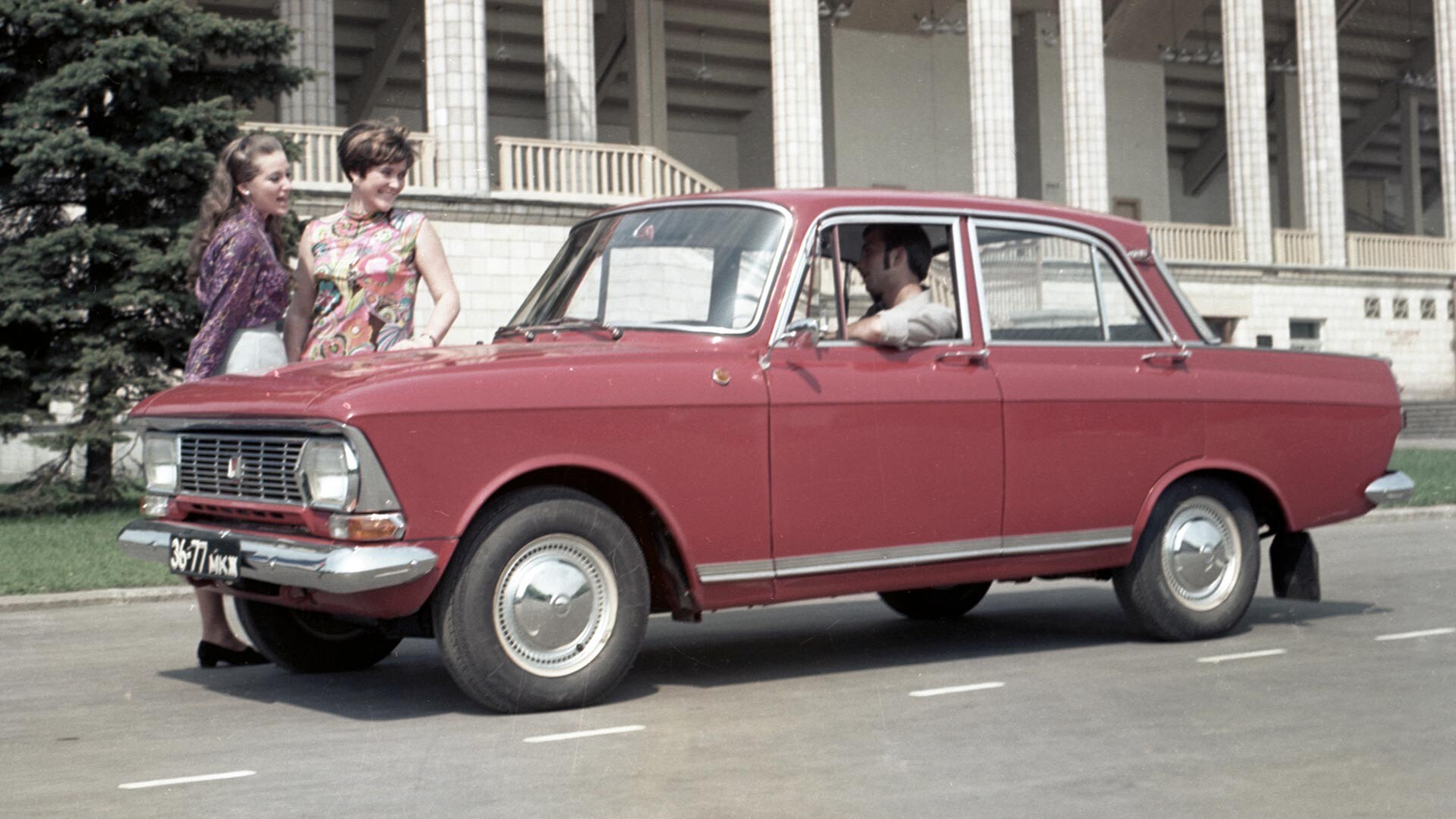
Moskvich 412.
SputnikIn 1972, British auto racer Tony Lanfranchi won the Castrol and Britax racing series behind the wheel of the Moskvich ‘412’. In line with the rules, the car that cost less than £600, fell into the last, fourth group (the division was based on the value of the car, not on its technical characteristics). Tony’s high score in his category enabled him and the Moskvich to beat the main contenders - the BMW 2002 Tii and the Ford Capri 3,000 GT - and win an ultimate victory.
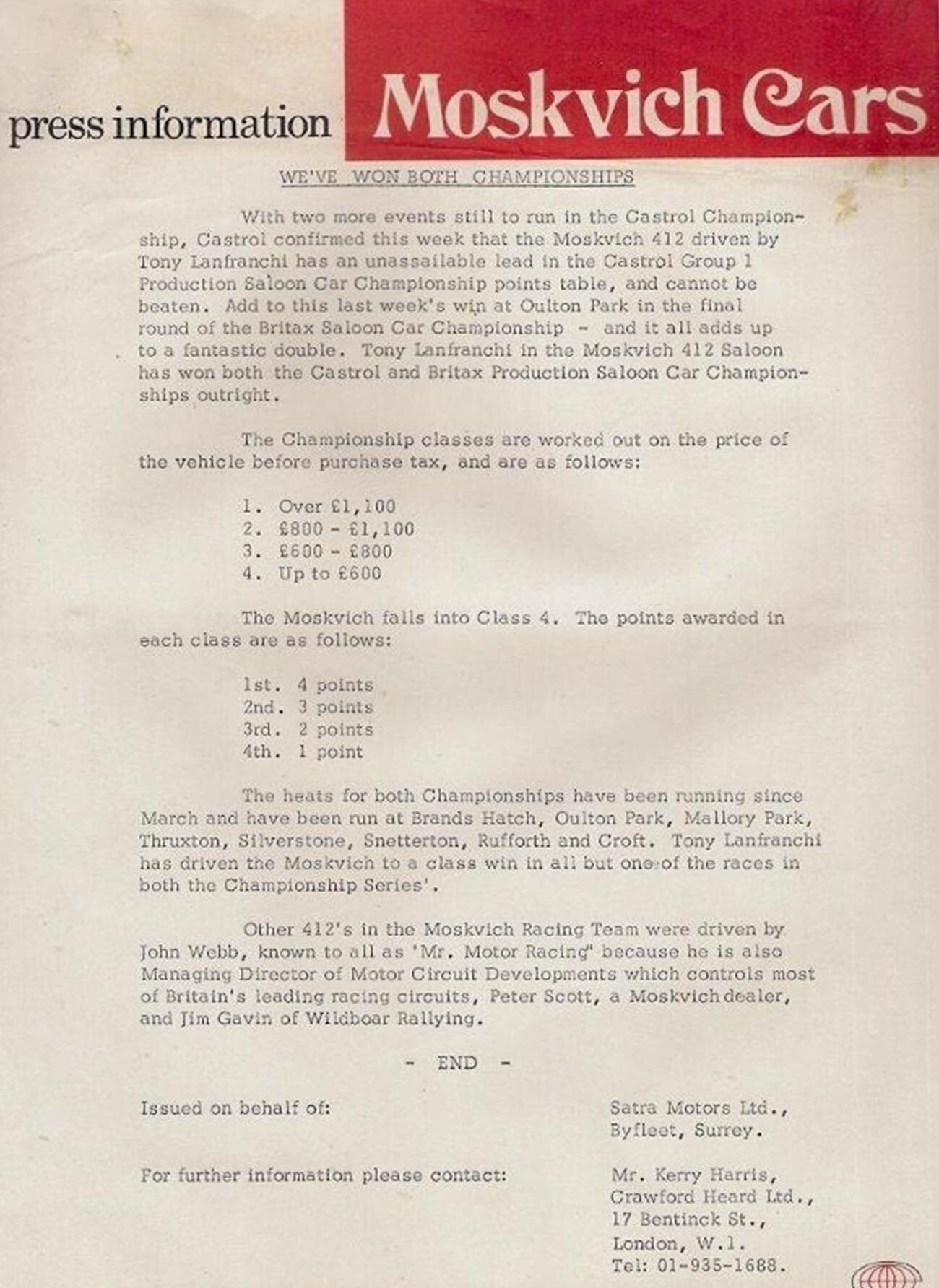
Victory announcement.
Archive photoThanks to this achievement, the ‘412’ model became, at one time, one of the most popular in the USSR and was also highly valued abroad.
Given its optimal combination of reliability, power and efficiency, the Moskvich became the flagship of the Soviet car industry back in the 1960s and, soon thereafter, more than half of its annual output was exported abroad.
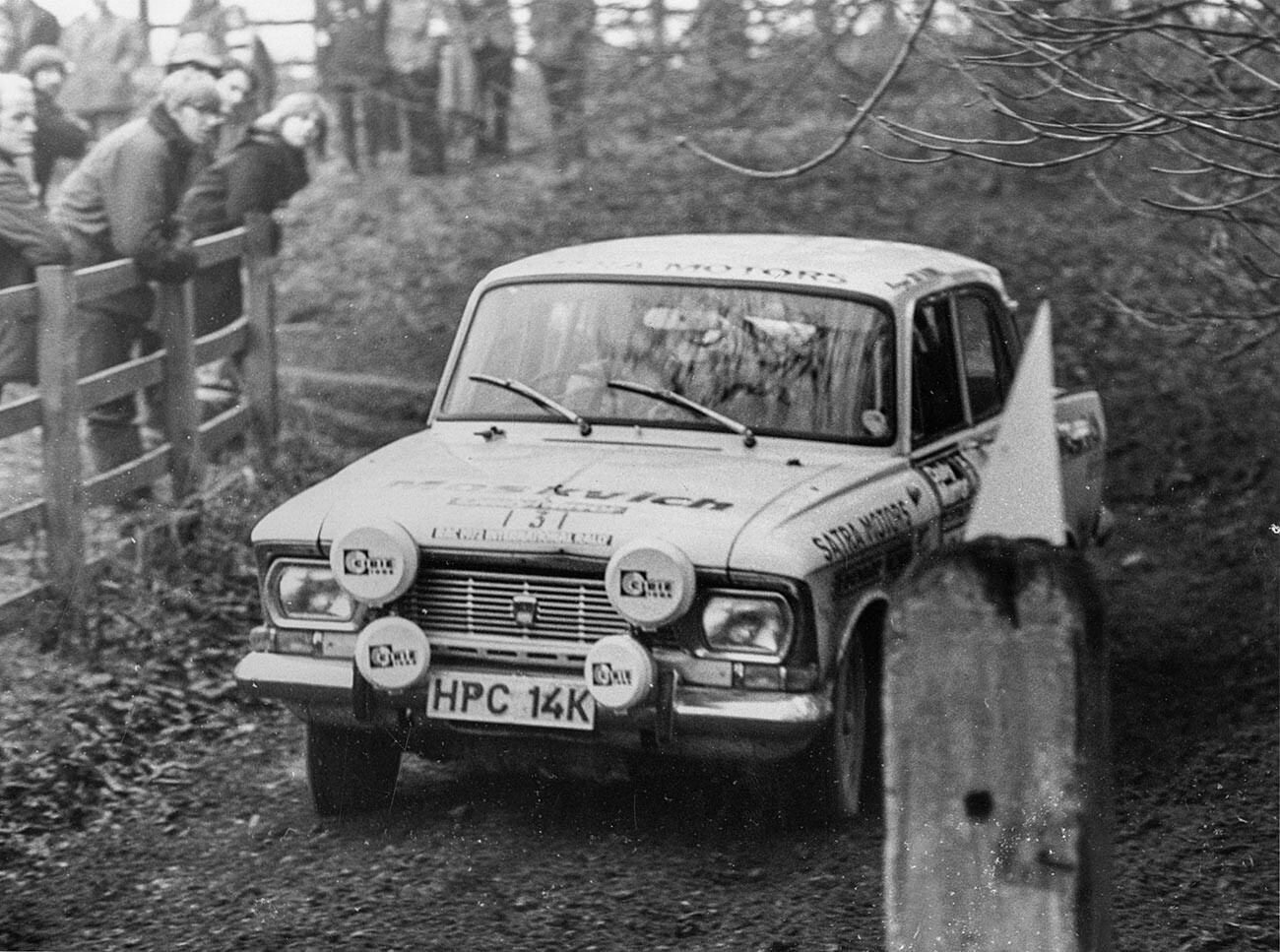
Moskvitch 412, Tony Lanfranchi /John McKerrell RAC Rally1972/
Legion MediaSubsequently, Moskvich was outrun by Zhiguli and Volga in the ranking of popular Soviet cars, losing its leading position, and, in 2001 - when the last car rolled off the assembly line - the brand seemed to have outright become a thing of the past. From 1998 until 2022, the Moscow-based Moskvich plant produced Renault and Nissan cars and, from 2012, the company became fully owned by Renault.
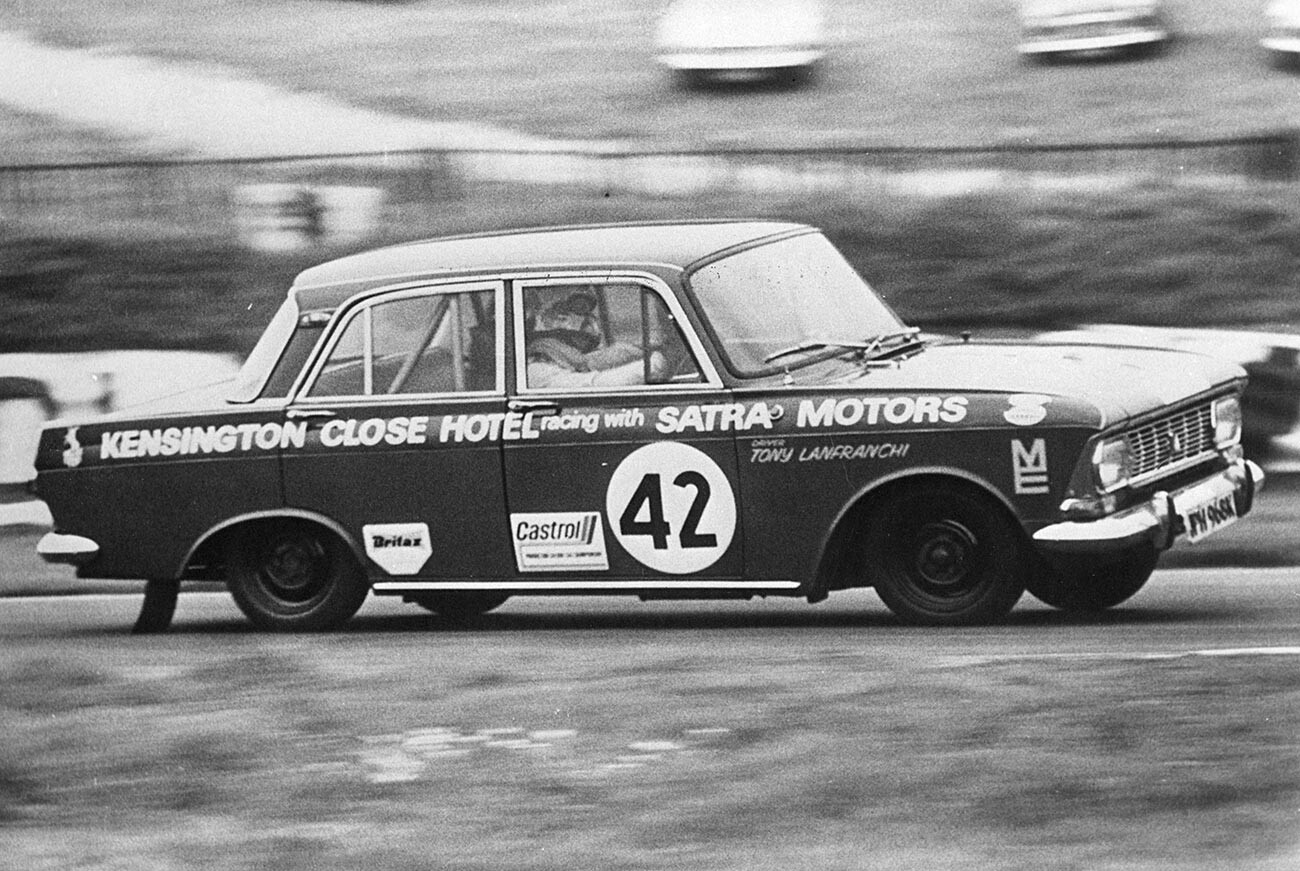
Moskvitch 412, Tony Lanfranchi Winner Of Both Castrol Group 1 And Britax Saloon Car Championships 1972/
Legion MediaIn May 2022, the plant was given back the name ‘Moskvich’ and transferred into the ownership of the city. At the same time, it was announced that the same-name car would be relaunched and not only the version with an internal combustion engine, but also with an electric motor. The new models at the moment are replicas of the Chinese front-drive crossover JAC JS4 (aka Sehol ‘E40X’), which has been produced since 2018 and sold not only in China, but also in Brazil, Egypt and Libya.
Below are the legendary models of Moskvich that, at some point, all became a sensation of the Soviet car industry.
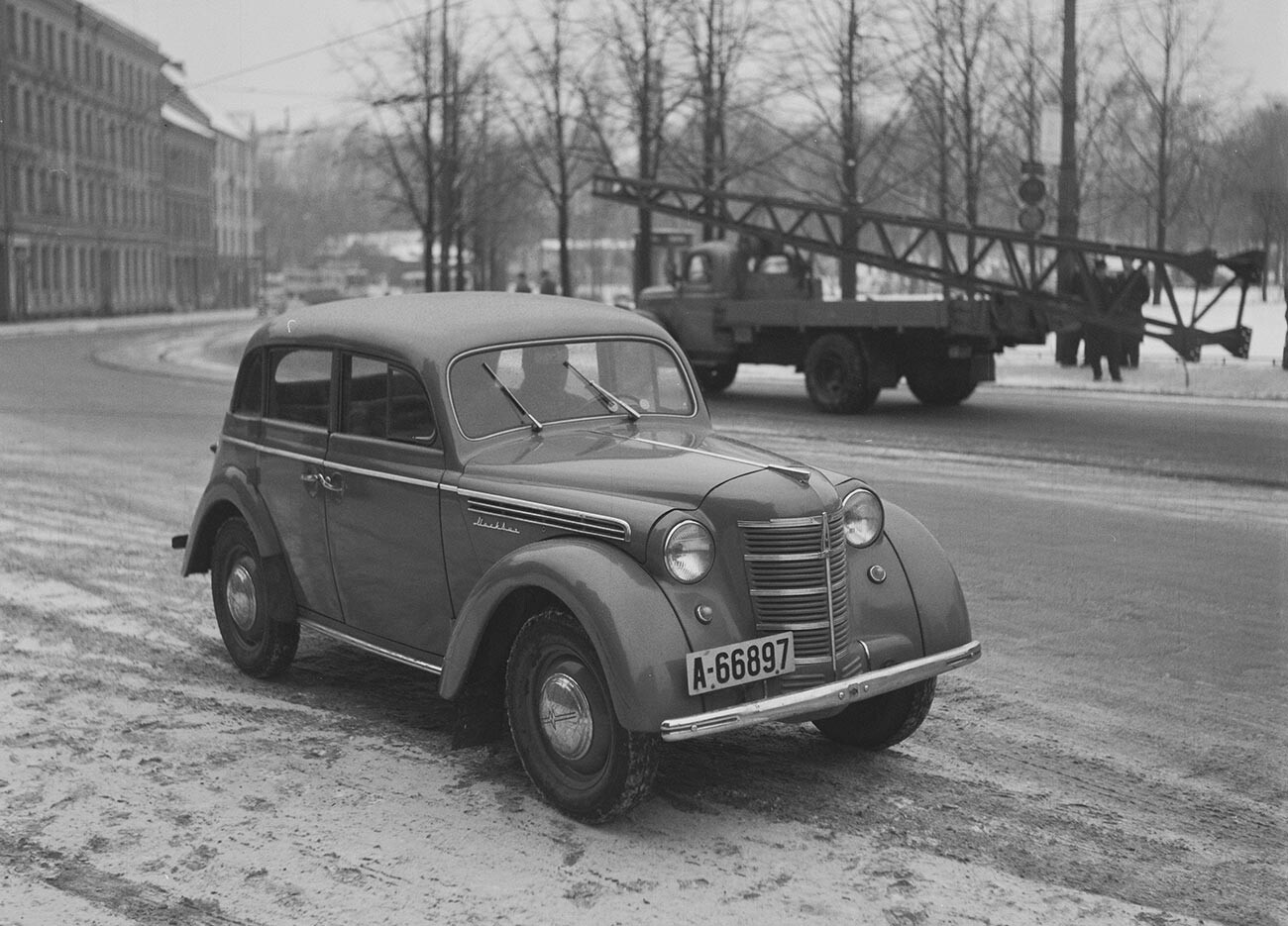
Moskvich, 1955.
Ragge Strand/National Archives of Norway (CC BY-SA 4.0)/SputnikThe very first ‘Moskvich’ was produced from 1946 to 1954. It largely replicated the German Opel ‘Kadett K38’, which was produced in Germany in 1937 - 1940. According to Soviet researchers, the drawings and master models were recreated in Germany by mixed teams of German and Soviet engineers. Later, a number of its modifications were developed - a van, a pickup and even a convertible limo. The automobile passed acceptance tests only in 1949, in the midst of the serial production.
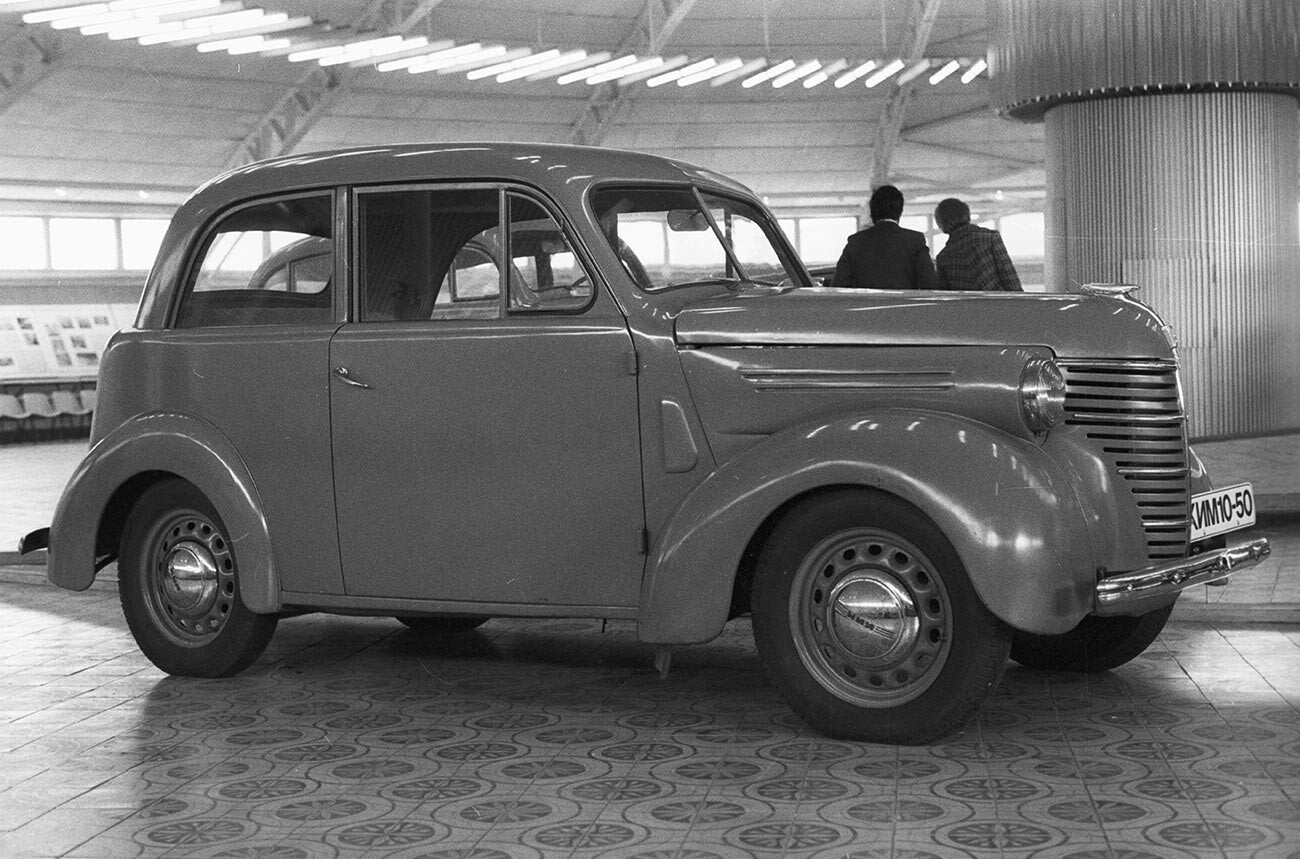
KIM-50.
V.Khomenko/SputnikThe Moscow Automobile Plant started its work in 1930 with the production of American Fords: first, those were originals made with “native” components, then - starting from 1933 - the plant assembled Soviet licensed copies of ‘GAZ-A’ and ‘GAZ-AA’. The model that arrived after them - ‘KIM-10-50’ - replicated the Ford Prefect.
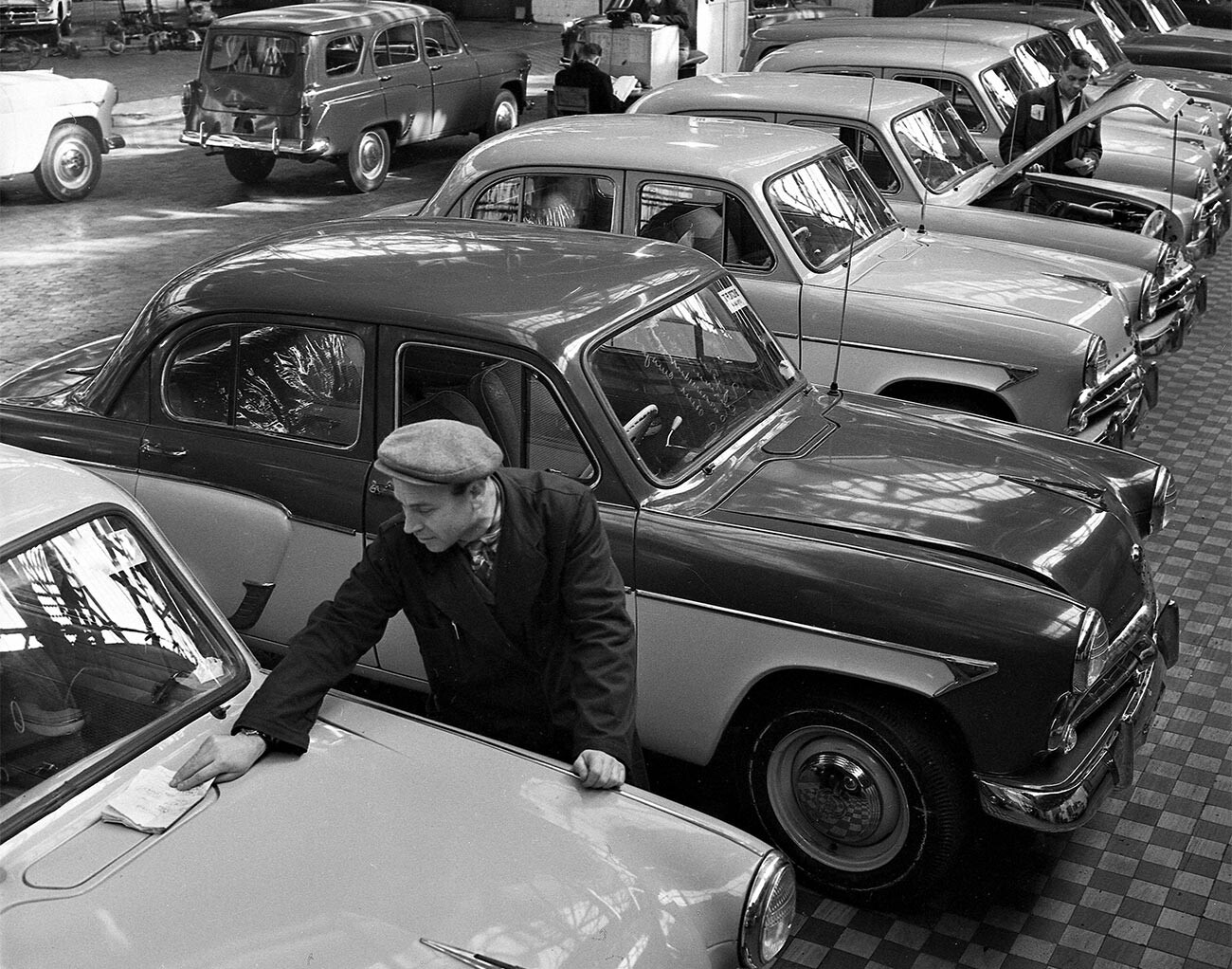
Moskvich 407.
David Sholomovich/SputnikThe car was an upgrade of the earlier Moskvich ‘402’. During the entire period, from 1958 to 1963, as many as 359,980 cars were produced, with 120,903 automobiles being exported. For several years in a row, more than half of the output went abroad.
The cars meant for Western customers had a two-tone body painting, a refined exterior and a more expensive interior; some had the steering wheel on the right-hand side. The cars were in demand in France, Belgium, Scandinavia, Finland and Britain. At the same time, in Europe, Moskviches were assembled by the Belgian company Scaldia and sold under its brand ‘Scaldia Essence’.
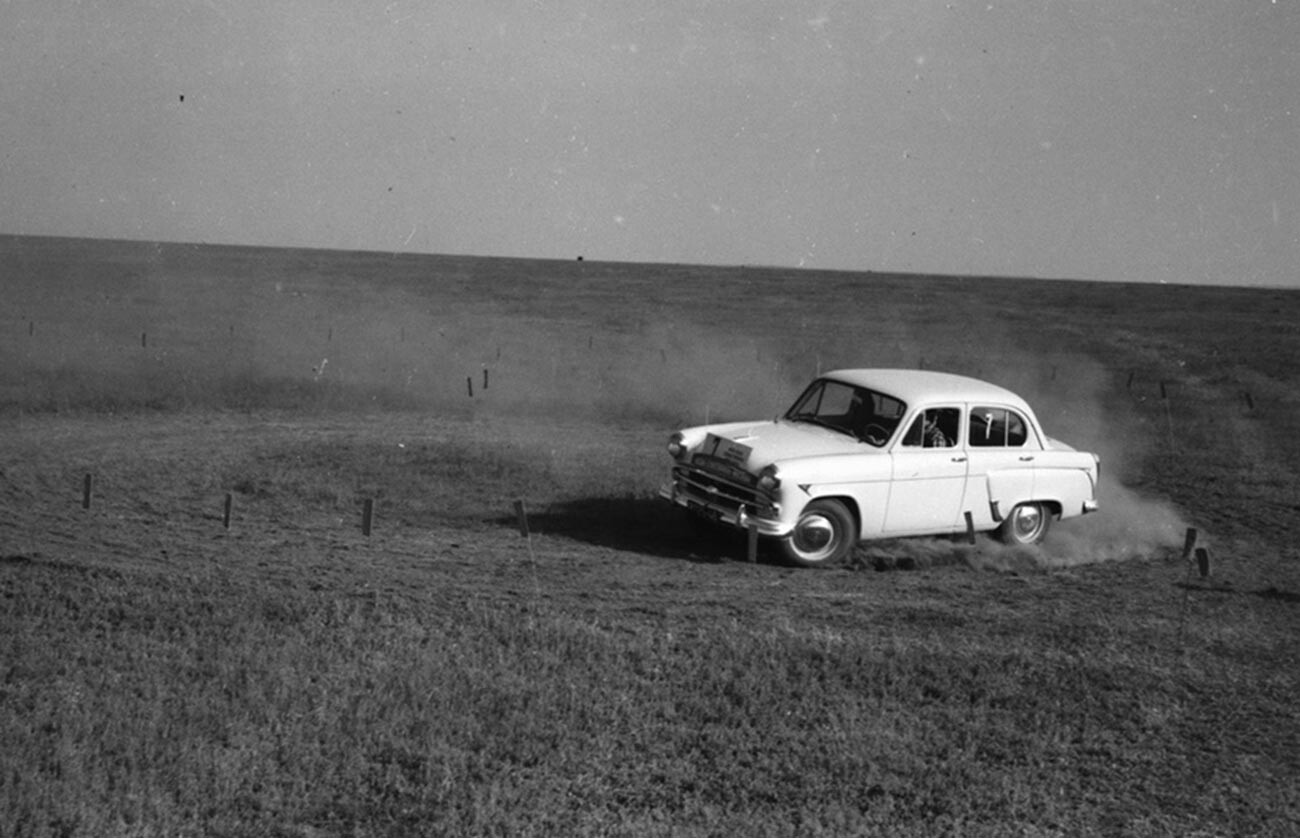
Moscow-Sevastopol-Moscow rally. Moskvich 402.
Valentin Khukhlaev/russiainphoto.ruThe car could develop the speed of up to 115 km/h and this enabled it to perform well enough in its first motor rally called ‘1,000 Lakes’ in Finland. Moskvich cars debuted there almost as basic cars, not intended for high-speed sport competitions, but they all reached the finish line without being seriously damaged.
Later, designers developed a sports Moskvich ‘407’-coupe car with an engine capacity of 70 hp, which regularly took part in various international races - the motor race Acropolis and Monte Carlo, as well as London-Sydney and Paris-Sydney rallies and it won prizes. This was another reason for the rise in the number of import orders.
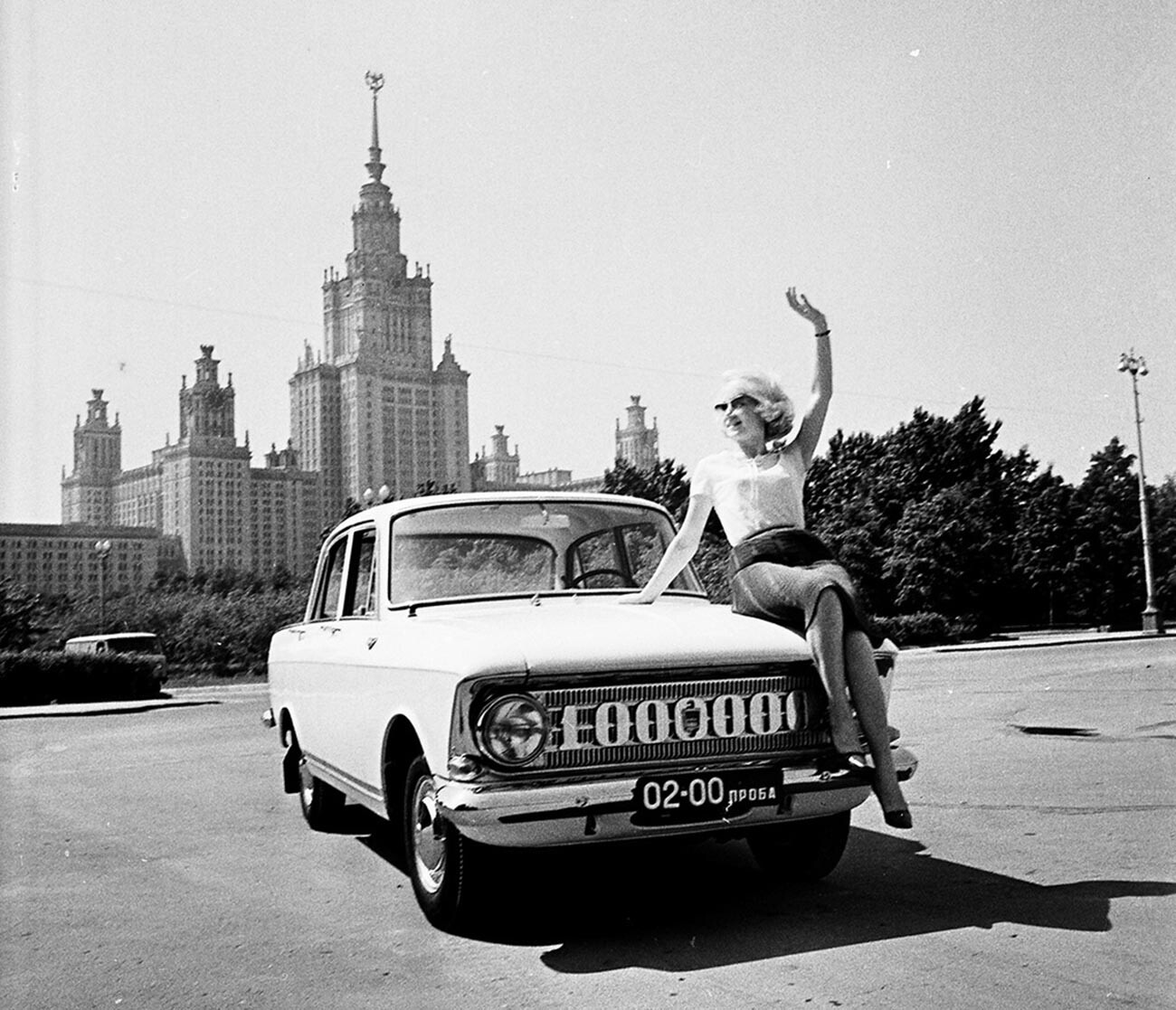
Moskvich 408 in Moscow.
Valentin Khukhlaev/russiainphoto.ruThe car with flowing body lines, fins on the stern, elongated lights and 13-inch wheels ( the first ever in the Soviet automobile industry) enjoyed a lot of popularity both in the USSR and in Western countries.
Its technical specifications, namely the engine up to 60.5 hp and acceleration to 129 km/h, also accounted for the popularity of the Moskvich ‘408’ abroad. Every year until the late 1960s, more than half of the output was exported.
In Scandinavia, the car was sold under the name Moskvich ‘Carat’, in France - Moskvitch ‘Elite 1360’, in the UK (there was a special right-hand drive version) - Moskvich ‘408’, in Germany - Moskwitsch, in Finland - Moskvitsh ‘Elite’ (with two headlights) and ‘Elite de Luxe’ (featuring four headlights). In Bulgaria, the cars were assembled from Soviet-made components under the name Rila ‘1400’. In Belgium, the assembly was carried out by Scaldia-Volga, which sold different versions of Moskvich under the names of Scaldia ‘408’, Scaldia ‘1360’, Scaldia ‘1400’, Scaldia ‘1433’ (a three-door station wagon), Scaldia ‘1426’ (a five-door wagon) or Scaldia ‘Elita’. Some of the Belgian cars came with European diesel engines.
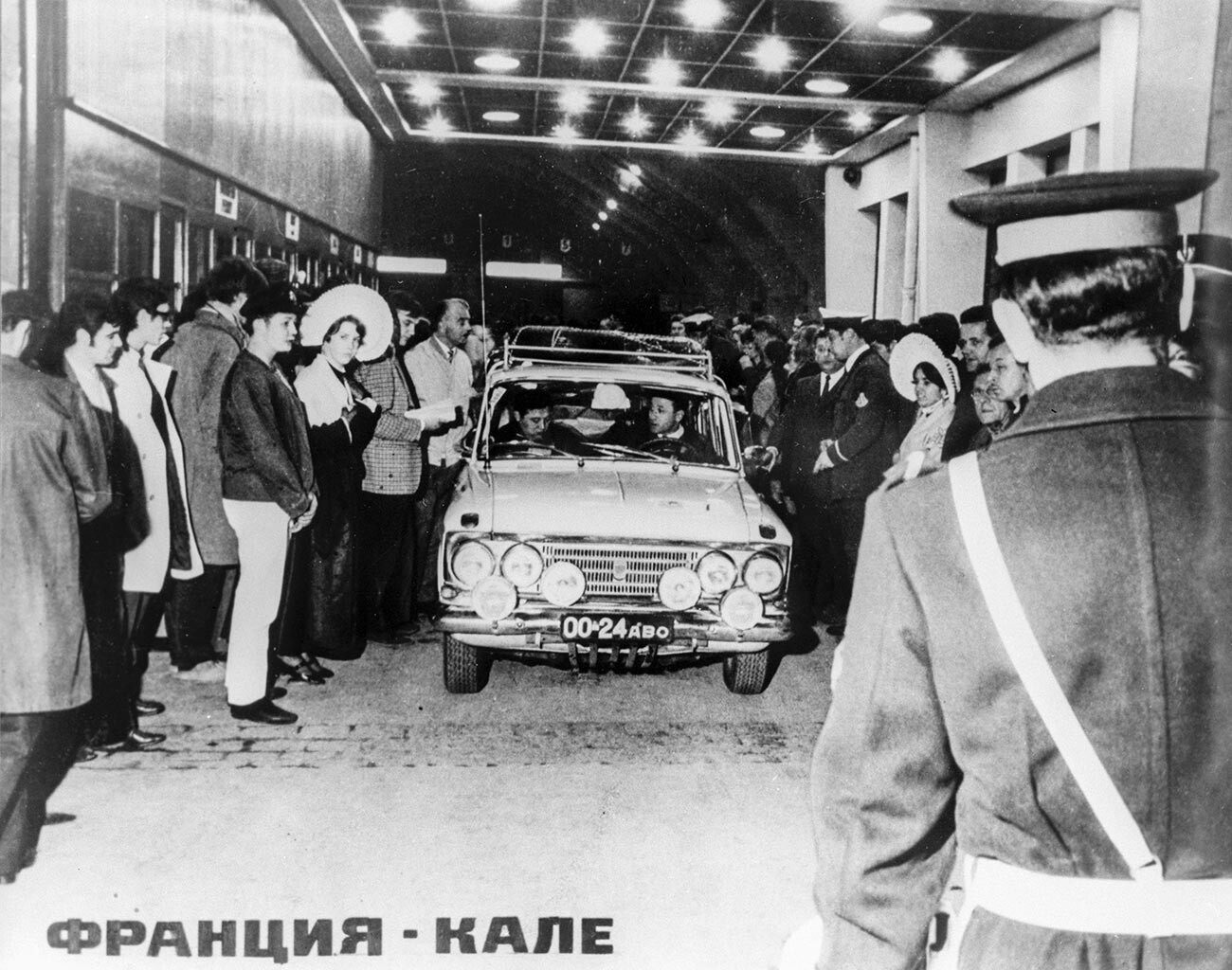
Moskvich in French Calais during London-Sydney rally.
SputnikInterestingly, in the USSR, the ‘408’ model cost 5,000 rubles (or £1,900), while, in the UK, it cost around £650.
The car was produced from 1964 until 1975 at two plants - in Moscow and Izhevsk.
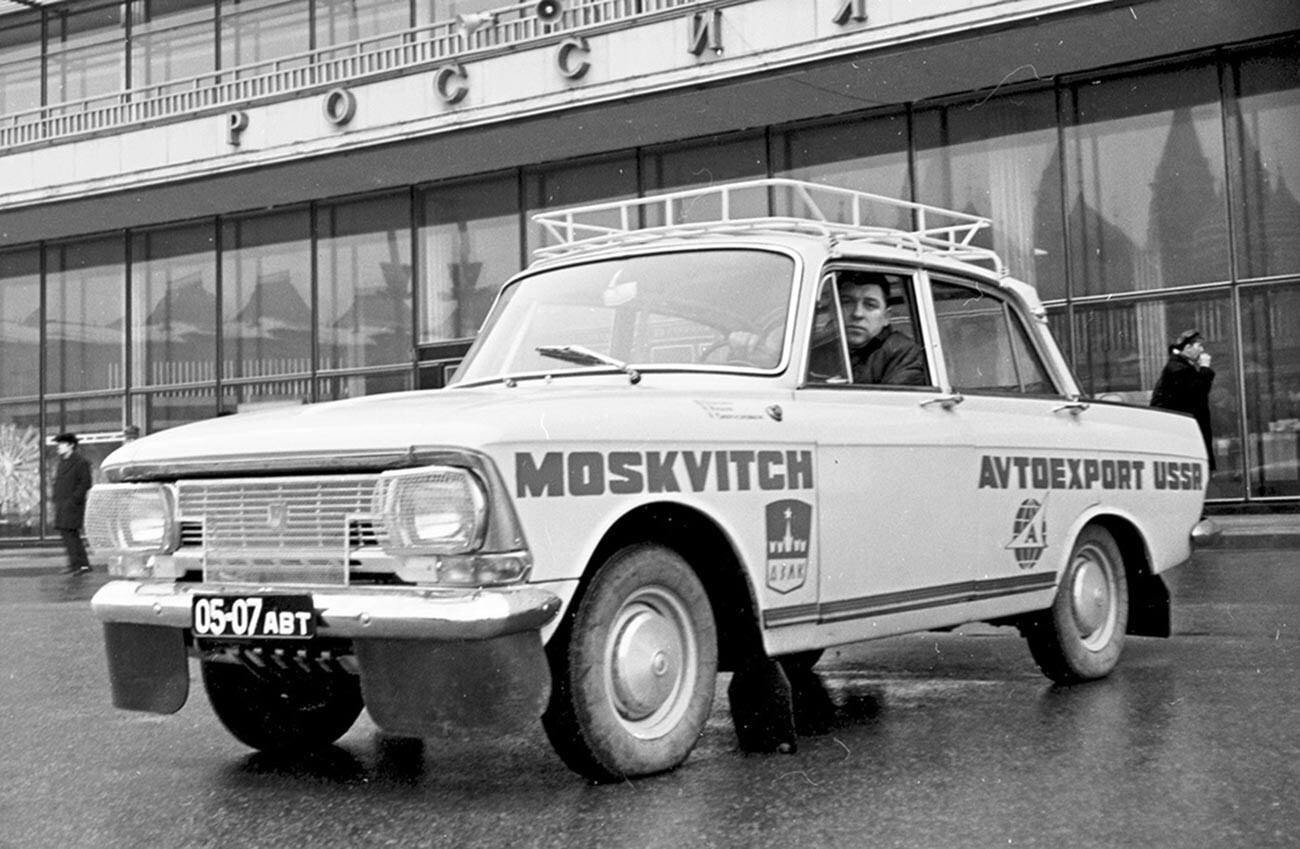
London-Mexico rally.
The engine power of this improved version of the Moskvich ‘408’ was 75 hp, while the maximum speed was 145 km/h. In its class - a small car of the 2nd group with the engine volume of up to 1,499 cc - it became a record-breaker in terms of its power load. Besides, the Moskvich ‘412IE’ became the first car in the USSR to be equipped with safety belts back in 1969. It also came with a dual-circuit brake system and bumper fangs to protect that part of the car. It is believed that the Moskvich ‘412IE’ was the first Soviet car, in which serious attention was paid to passive safety issues. Starting from 1969, it became the flagship model of the Moscow Automobile Plant and became known as a sturdy and passable car. And, certainly, it also had a racing version to participate in motor rallies.
It was assembled in Moscow from 1967 to 1976 and in Izhevsk from 1967 to 1997, where it was produced under the independent brand Izh ‘2125’. According to contemporary estimates, Izhevsk-produced Moskviches differed from the metropolitan ones in terms of a more reliable assembly, but rougher interior.
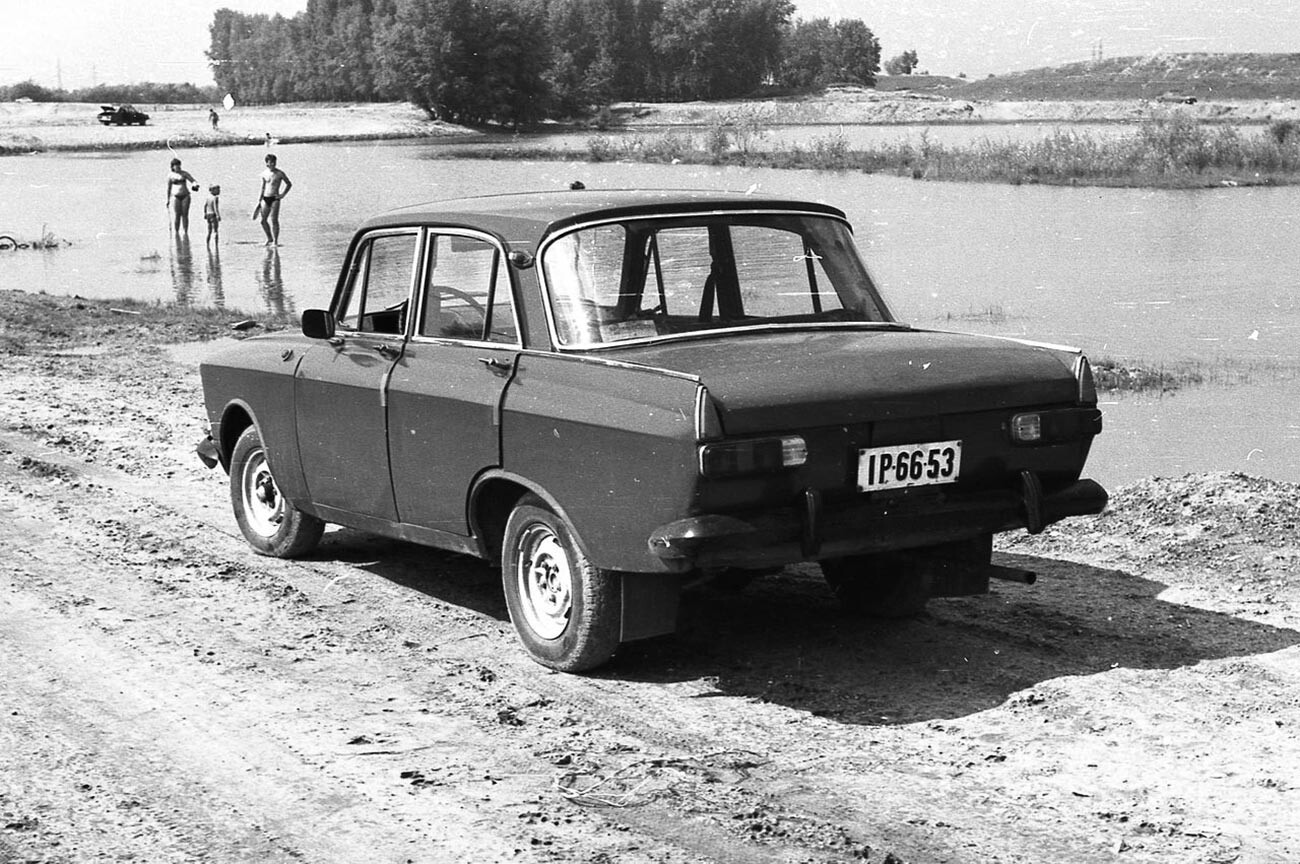
Cars from both cities were sent abroad. The model was also assembled in Finland and Bulgaria, while on the Bulgarian market, it came under the name of Rila. Screwdriver assembly was also carried out in Belgium at the Scaldia-Volga plant, which sold the car as Moskvich Scaldia 1500. Belgian Moskviches were different from the Soviet in terms of the interior design. Also, it could optionally be equipped with a diesel engine.
Dear readers,
Our website and social media accounts are under threat of being restricted or banned, due to the current circumstances. So, to keep up with our latest content, simply do the following:
If using any of Russia Beyond's content, partly or in full, always provide an active hyperlink to the original material.
Subscribe
to our newsletter!
Get the week's best stories straight to your inbox